There are many lichen habitats in Cumbria, some literally on your doorstep. However, if you want a walk then there’s potentially lots to see while out on the fells and scars of the Lake District and the Pennines. The species I’m showing here don’t need a hand lens to see. With your eye in, you can spot them en route. If you have time and a sunny day or flask, then do take a breather and stop to have a closer look. If you are more adventurous, do visit ghylls, crags and the spoil heaps outside old mine-workings – but do take care.
Most lichen species have a preference for either acid or basic geology with some only found high up on montane heaths. Just as we look at geological maps to see what lichens are around, geologists have been known to look at the lichens to determine the rock type!
Limestone scars and pavements
Limestone is a basic (alkaline) rock which forms outcrops called scars – and flat pavements of clints (stones) and grykes (the gaps between). Limestone pavements can be great for specialised plants. In the past stone may have been robbed out but many areas are now protected.
Many of the limestone specialist lichens are crusts which can be hard to identify. On our local patch, Knipe Scar, there’s lots of Squamarina cartilaginea with green squamules . If you look carefully you might see Solorina saccata on the vertical sides of the clints. It’s easy to see why this species has a common name of Chocolate chip lichen. On our local patch, Knipe Scar, I’ve taken photos six months apart; you can see the brown fruit less developed in one area in the inset photo.
On the short turf beside the pavement, you might find Peltigera leucophlebia or ‘fleb’ as we’ve come to call it, usually with green lobes with small black warts on. There is a similar green lichen P. britannica but this is rarer and not on basic rock; we have re-found this species at a couple of sites in the Lakes.
Fell lichens
The geology of Cumbria can be pretty complicated, but most of the fells are acidic /siliceous / volcanic rock. There are still plenty of places with basic flushes, so you might find Peltigera leucophlebia for example amongst the crags. And vice-versa, you can find erratic siliceous boulders on limestone.
If you look on the rocks around you, you will often see Stereocaulon vesuvianum, looking a bit like a mini-eruption from Mount Vesuvius, or map lichen Rhizocarpon geographicum usually looking yellow/green with black borders between the ‘countries’. Another common species is Parmelia saxatilis. Some species found on trees are also on montane rocks as well as heather, eg Platismatia glauca and Hypogymnia physodes.
On some rocks you might find Lasallia pustulata which is one of the species called ‘rock tripe’ which I’m told is edible – I’ve never tried it but it does look a bit like a poppadom! This is whitish-grey when dry but is green when wet, which got me very perplexed once.
Ophioparma ventosa, blood-spot lichen, is fairly common on acid rock, with the main thallus either yellow-ish or pale pink. The red fruit are lecanorine, which means the pale thallus forms the exciple margin of the apothecium, providing a jam-tart-in-pastry look.
Another genus you might find is Sphaerophorus with species S. fragilis and S. globosus found in Cumbria, both with a coral like appearance, occasionally found with black eyed stalk fruit, but often grazed by slugs!
As you get a bit higher, on rocks you might see various Umbilicaria species such as Umbilicaria cylindrica. If fertile these have amazing gyrose fruit ie with spiral patterns. U. cylindrica is usually gray with prongs on the margins. The rarer U. polyrrhiza is a lovely pale chocolate brown with a mass of black rhizines underneath. In Langdale there is the main site in the UK of nationally rare Umbilicaria crustulosa.
Also higher up, but usually quite small, is the lovely Cornicularia normoerica.
Montane heath lichens
The tops of the Lake District fells and some parts of the Pennines have harsh conditions that resemble the arctic. Here, the heather and grass don’t grow very tall as they are lashed by the wind and rain. Where you see the nets of Cladonia portentosa and tubes of Cladonia uncialis you are in the right sort of area. Sometimes these species can be found lower down, alongside Cetraria aculeata.
This ‘wind-clipped heath’ on the fell tops is a precious habitat so if you find it, don’t trample around too much. Species that do well in more northerly latitudes can be found here, such as Thamnolia vermicularis, Cetraria islandica and Ochrolechia frigida. Our map for Thamnolia shows the sort of places you can look, but new sites are still being found in the Northern fells. Recently I found a loose fragment of C. islandica on the top of High Street in the eastern fells, possibly pulled up by a corvid. This would be a new site – but exploring at the time and on a subsequent visit, we couldn’t find where it came from.
Text and photos by Chris Cant



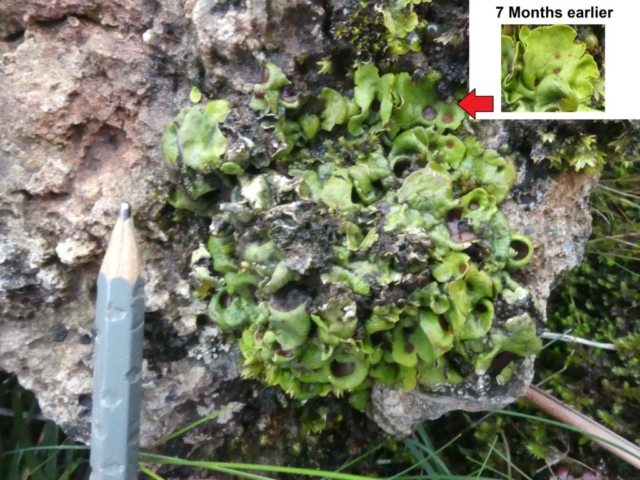

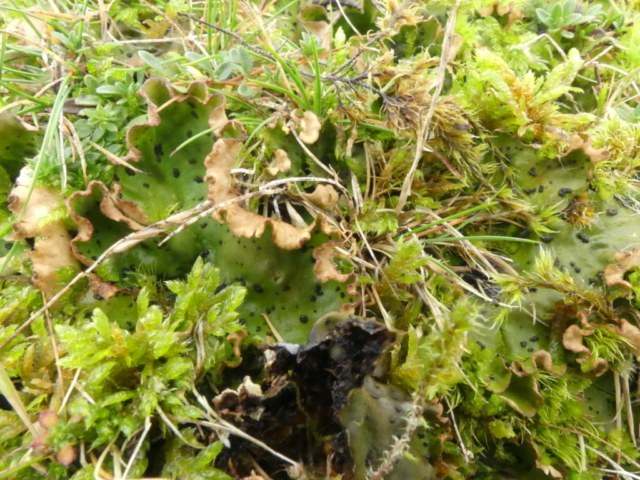
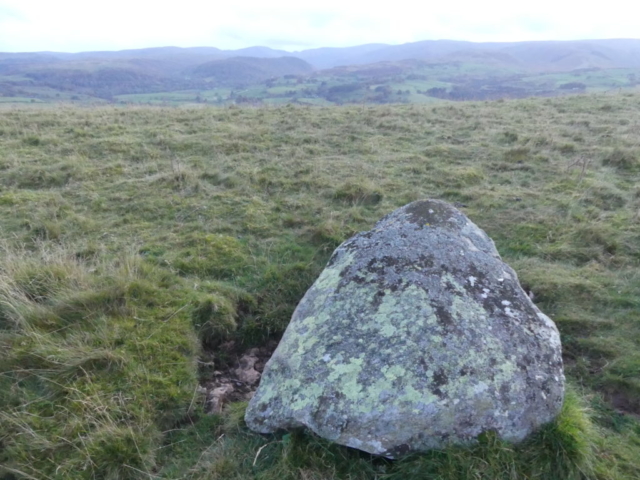

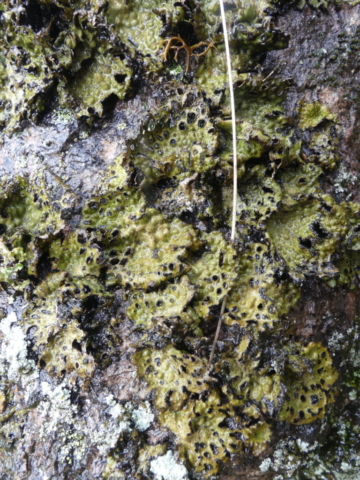





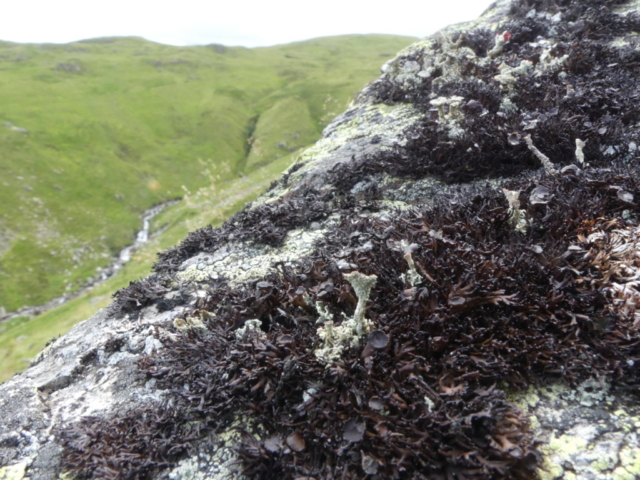
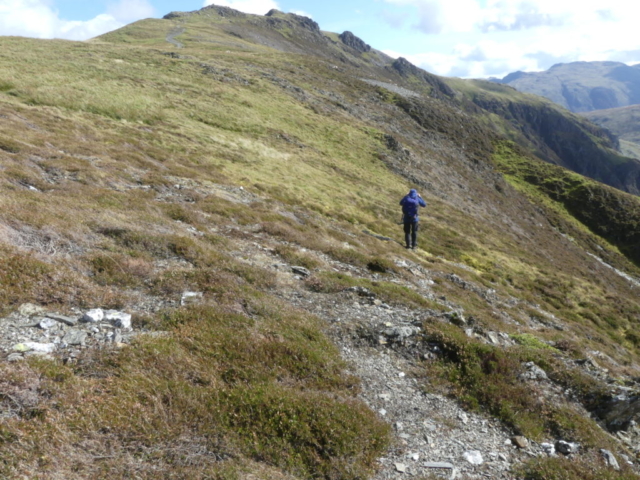
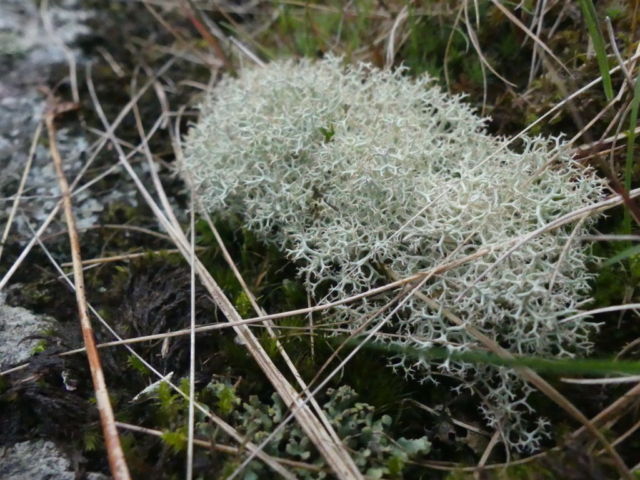
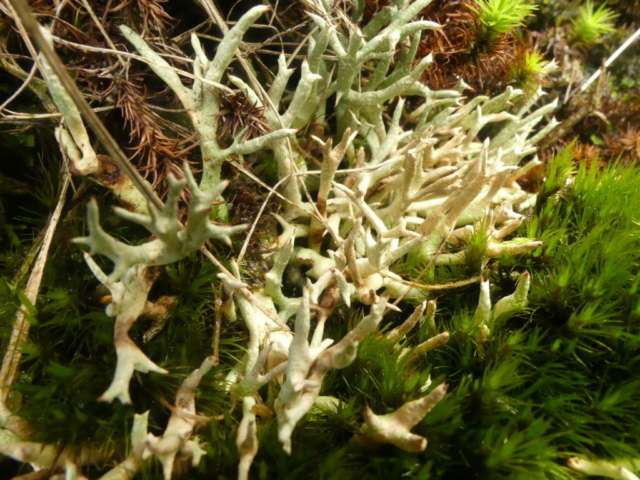
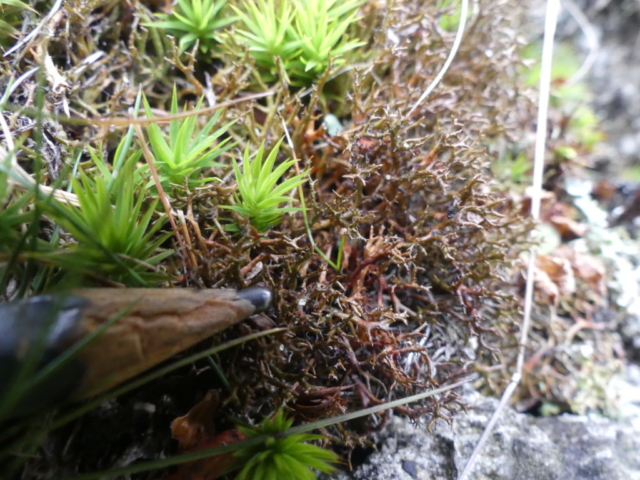

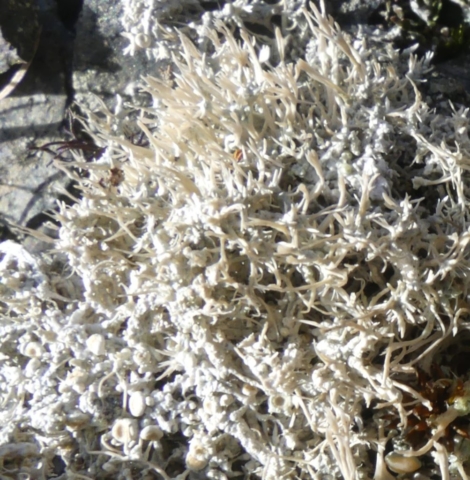
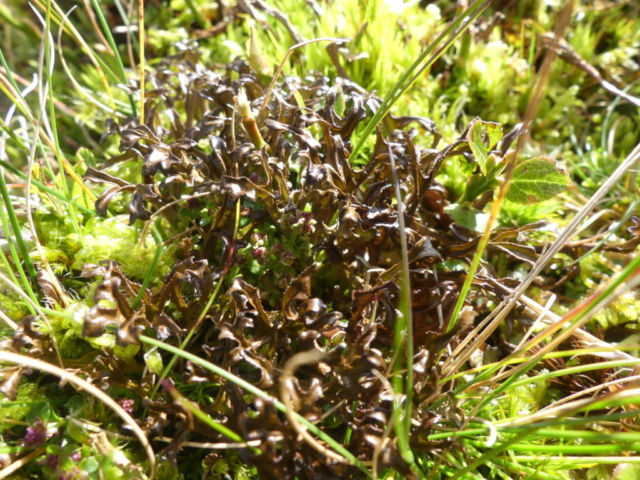
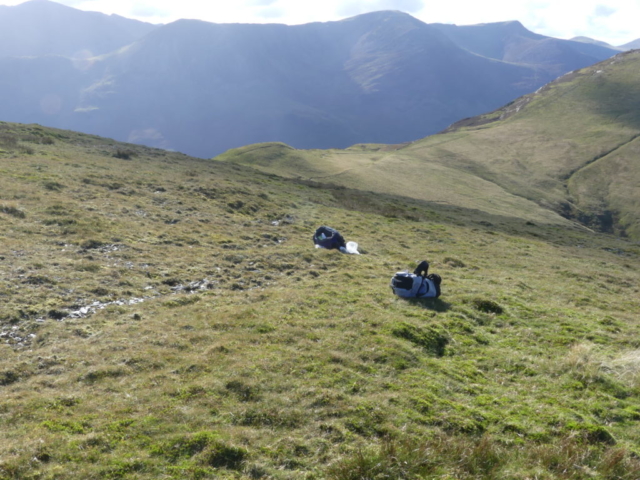
One reply on “Upland lichens”
[…] my theme of upland lichens, Caz Walker and I visited Little Dun Fell in the Pennines on 7/6/21 hoping to acquaint ourselves […]